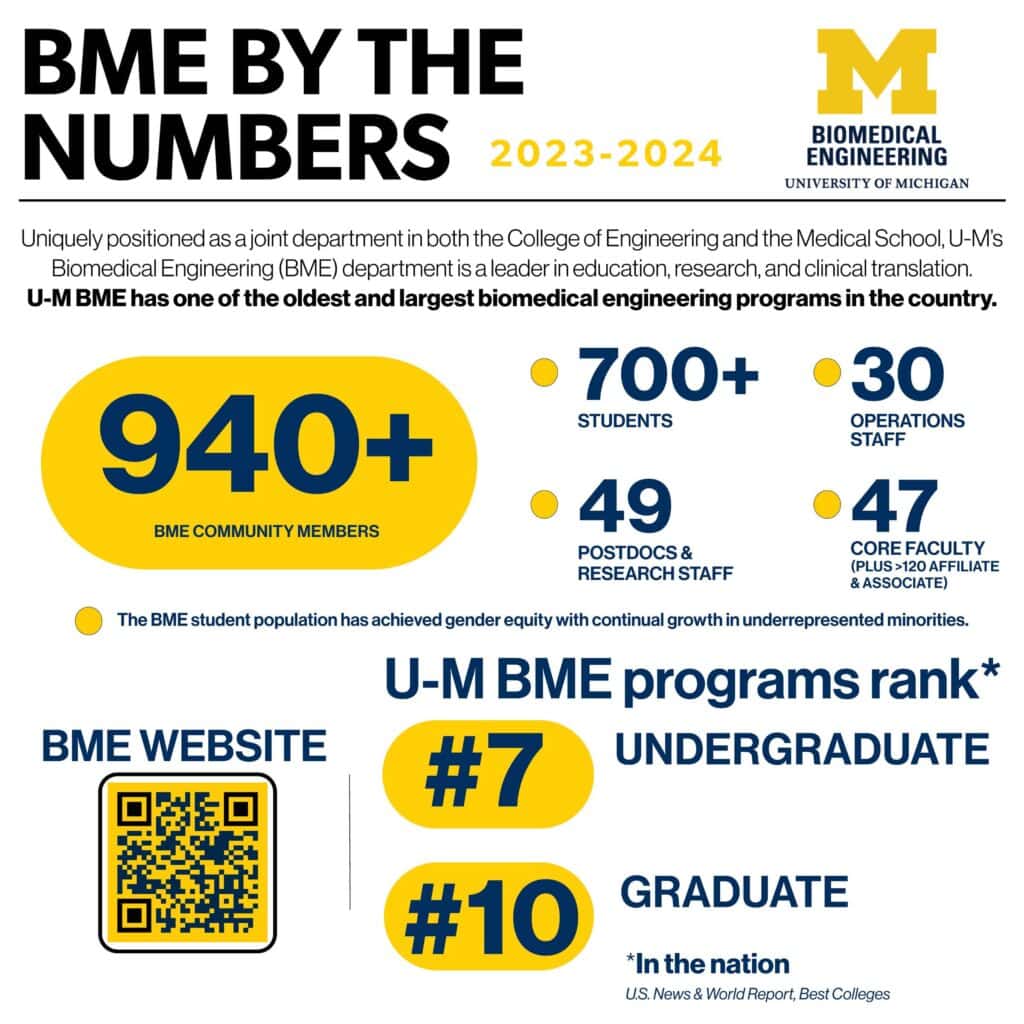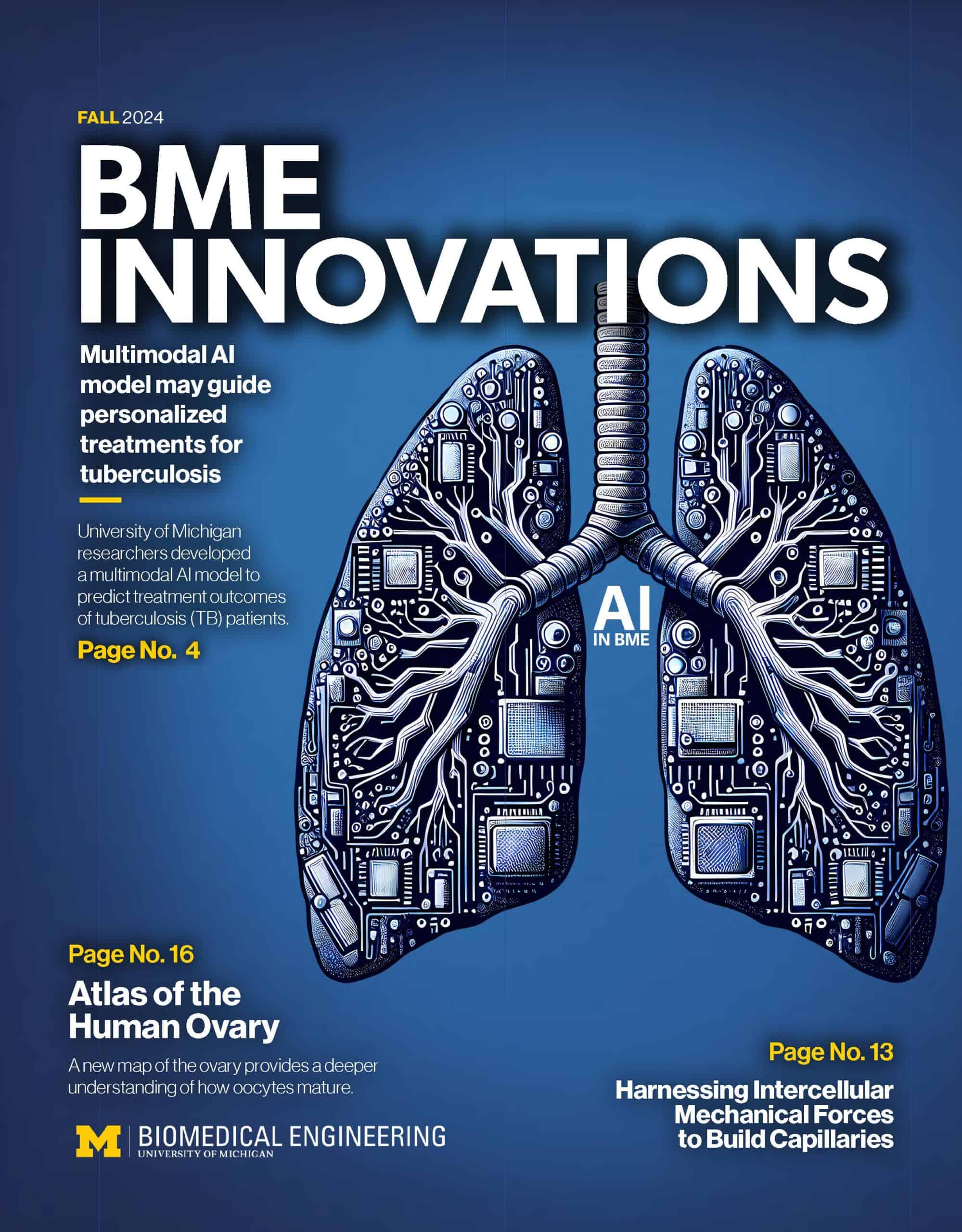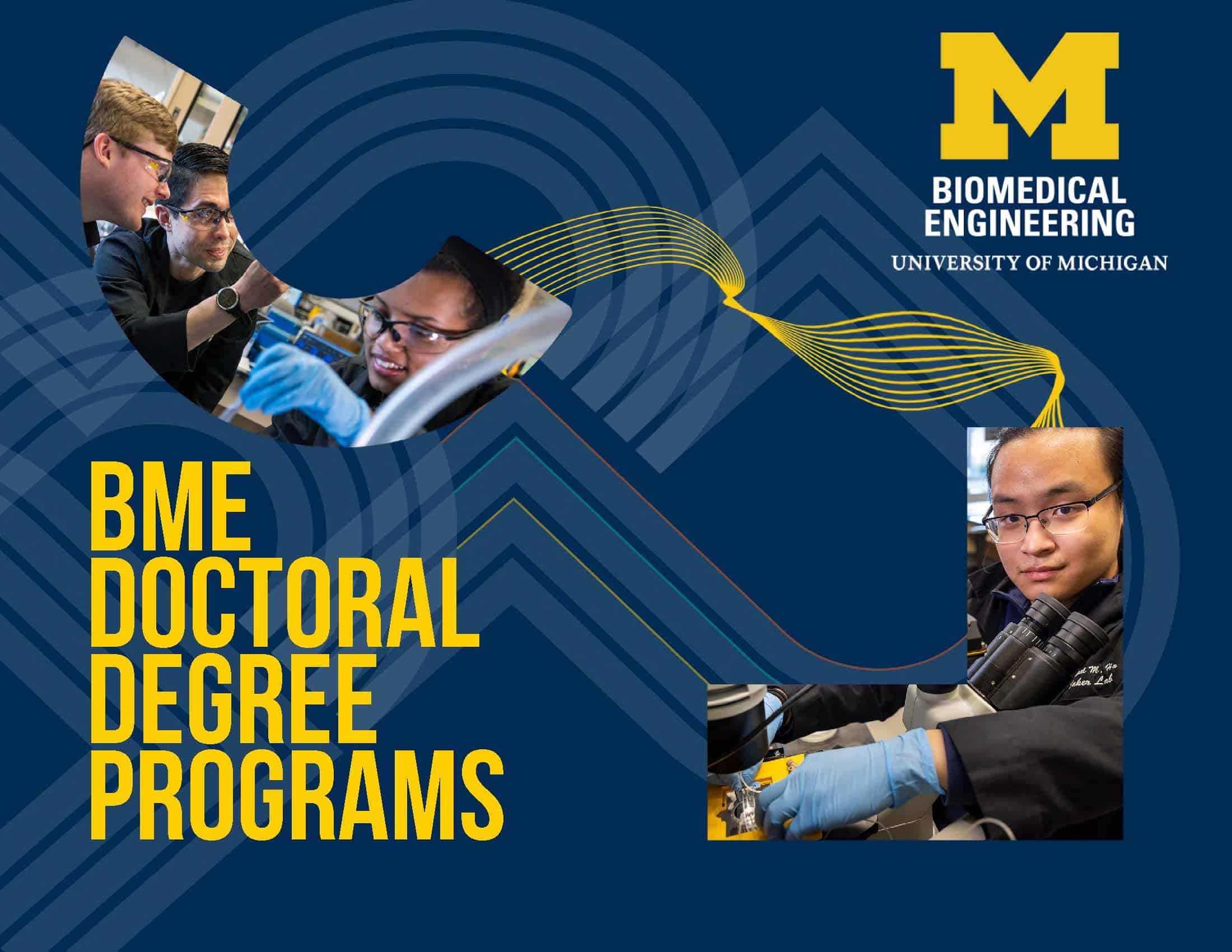
Biomedical Engineering
Solving important challenges at the intersection of engineering, medicine, and the life sciences for the benefit of humanity
-

Michigan Research Highlights First-of-Its-Kind Artificial Ovary
Ariella Shikanov, Professor, Biomedical Engineering, is highlighted in this video.
-

MIDAS PODS Grant Fuels U-M BME Innovation in Drug Synergy Prediction Using AI
Many computational models work on the principle of “homophily”—assuming that similarly acting drugs will yield the best results. However, this assumption may overlook the complexity of biological systems.
-

BME to Participate in Michigan Engineering EMERGE Event
The EMERGE application deadline has been extended until July 29, 2025.

DOCTORAL PROGRAMS
Learn about research and funding opportunities
MASTER’S PROGRAMS
Explore BME pathways to earn your MS, MSE, or MEng degree
UNDERGRADUATE ADMISSIONS
The Michigan BME undergraduate degree program provides a strong foundation in the life sciences and engineering.
Core Faculty
Our 47 Core Faculty reflect the breadth and depth of research represented in BME.

By the Numbers
Michigan BME is one of the oldest and largest biomedical engineering programs in the country.

BME Innovations

Read BME highlights from the past year.
Doctoral Brochure

Learn details about our Ph.D. program.
Master’s Brochure

Read about options for our Master’s programs.
Select BME Videos:
Edge in Tech Athena Awards
The EDGE in Tech Athena Award for Early Career recognizes promising young STEM leaders in industry, academia, or the public sector. Nominated by Mark Saltzman, Celeste Nelson, and Taylor Feehley, the award was presented to Dr. Alexandra Piotrowski-Daspit, a distinguished figure in the fields of biomedical engineering and internal medicine. Her research, notably in three-dimensional cell culture models, has significantly advanced our understanding of tumor development and mechanics.
Engineering 100 Section 510
Course Description:
Interested in BME or the healthcare industry? This section could be for you! Join us for a deep dive into the high-stakes world of technology and human health. Biomedical engineers design, redesign, and test devices that improve the treatment, diagnosis, and monitoring of important health challenges facing humanity today. This section will let you experience this process hands-on with real medical devices. We will explore:
- Stakeholder analysis (e.g., interviewing clinicians and patients)
- Ethical, legal, social, environmental, and economic implications that underlie every decision a biomedical engineer makes
- Statistics, regulatory bodies (e.g., FDA), and patent law to understand bringing a new device into the world
Learn about Histotripsy, a process used to treat cancer that was pioneered at U-M BME, through this video produced by Reuters.